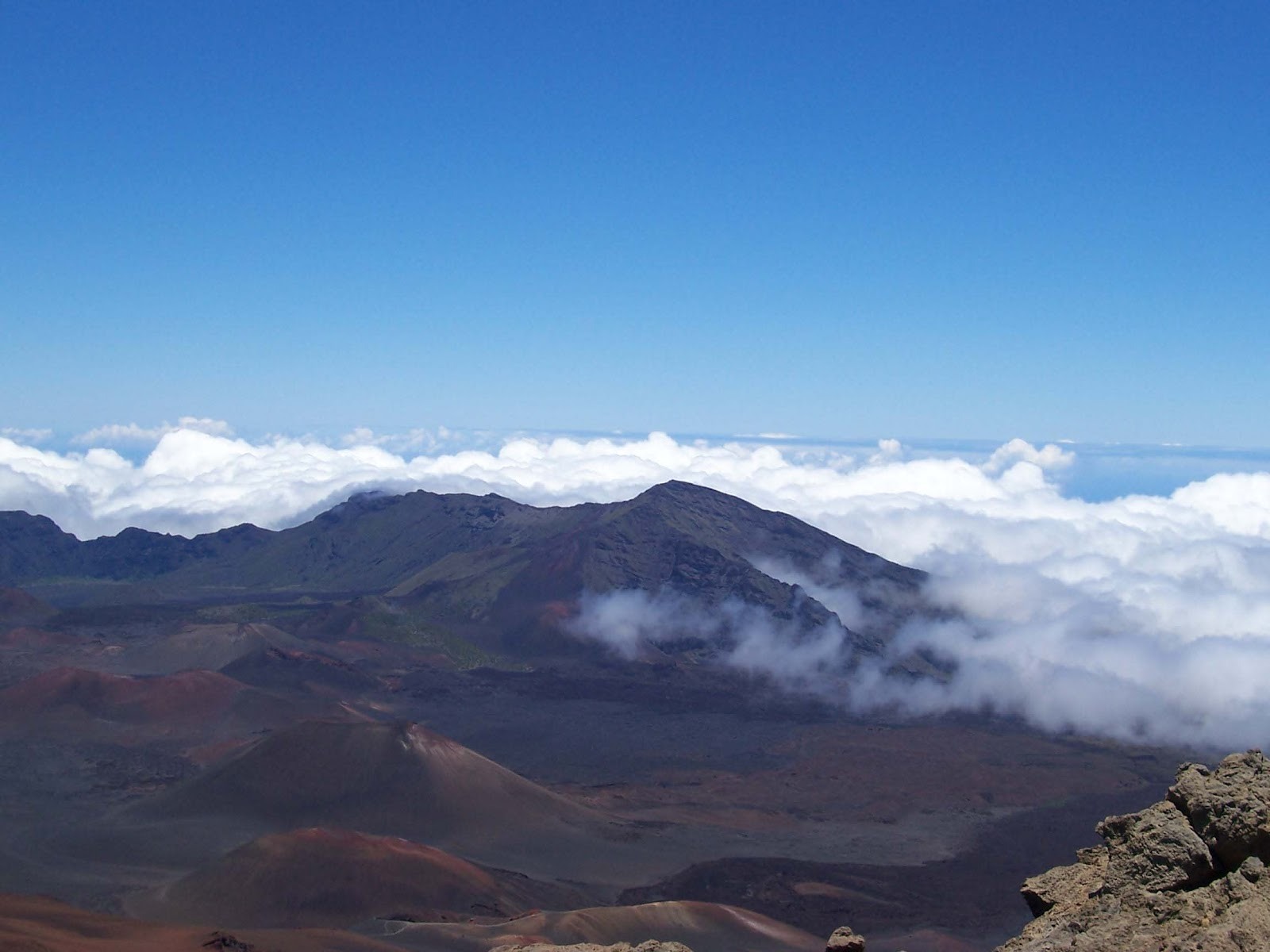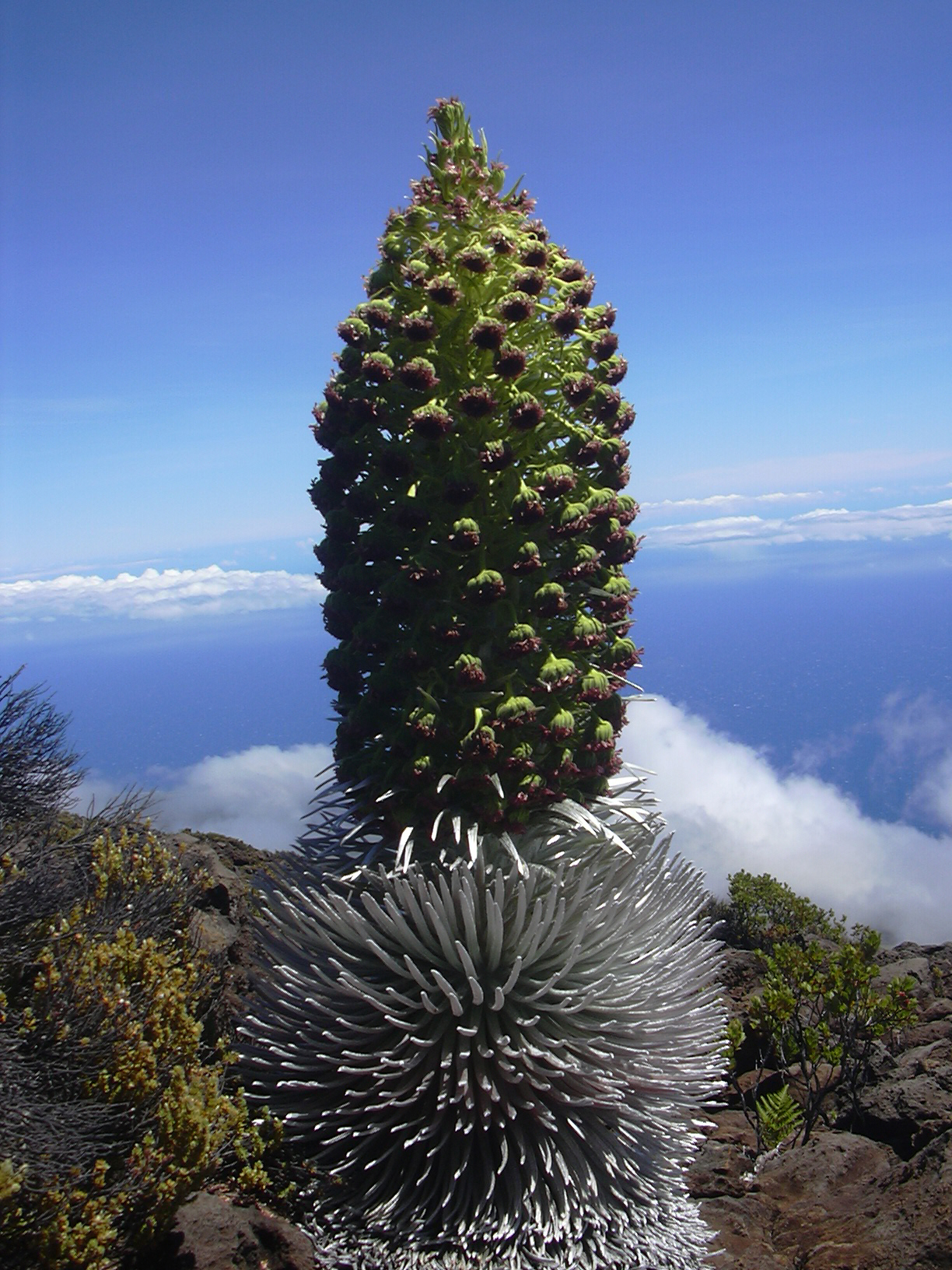One of the world’s largest volcanic basins is situated on the Hawaiian island of Maui. The awesome spectacle of the sun rising over its rim has provided inspiration for generations of artists and writers. The forbidding splendor and unique natural beauty of Haleakala ‘crater’ at the summit of the mountain of the same name can be fully appreciated only by those who have seen it for themselves, according to the American writer Jack London.
He maintained that ‘Haleakala has a message of beauty and wonder for the human soul that cannot be delivered by proxy.’ London is just one of several generations of non-native commentators who have been moved by this dormant volcano since the English explorer James Cook reached the Hawaiian Islands in 1778. In fact, although the mountain is volcanic in origin, the ‘crater’ on its summit is not, but is actually a vas basin formed by erosion and the merging of two water-carved valleys during a period inactivity. Its rim measures some 20 miles (32km) in circumference. The cinder cones which dot its floor are the result of more recent eruptions.

Haleakala Mountain, which soars to a height of some 10,000ft (3000m), dominates the island of Maui – the second largest of the tropical chain that constitutes Hawaii, 25 miles (40km) north-west of the so-called Big Island, Hawaii itself. Haleakala is Polynesian for House of the Sun. local legend links the volcano to the god after whom the island of Maui is named. There was once a time when the Sun, in its haste to get back to sleep, raced across the sky, with the result that the island received fewer hours of daylight. This angered Maui’s mother Hina because it prevented her properly drying the cloth she made from pounded tree bark. Maui devised a plan: he wove a coconut-fibre rope and lay in wait for the Sun to rise at the top of Haleakala. As it rose, he lassoed the first shafts of sunlight, so capturing the Sun. Maui made the Sun promise to move at a more leisurely pace, thereby solving Hina’s problem and ensuring a full day of sunlight for the islanders.
Haleakala last erupted perhaps as recently as 1790 and is one of the largest dormant volcanoes in the world. Unlike many volcano peaks, Haleakala is not perfectly symmetrical. Its eastern slopes are badly eroded and gouged by deep valleys and gorges that were formed by molten lava pouring from the summit down existing river valleys. The western slopes, by contrast, are crisscrossed by small, rain-fed streams. Climbers reach the summit by following a winding road through green meadows and groves of eucalyptus. When the sky is clear the road offers sweeping views over plantations of sugar cane and, south-eastwards, across the Pacific to the mountains of Hawaii.

At its rim, the crater is 7 miles (11km) across, while its floor covers an area or more than 19 sq. miles (49km). The terrain differs from one part of the crater to another and includes areas of forest, desert, meadow and a lake. The northern and eastern portions are used for grazing, but the western and southern sections are arid, their surface made up of sands that range in hue from deep chocolate brown to the palest of beiges, or thick layers of grey, russet, brick-red and purple ash and cinders streaked with black lava. Cones of reddish cinders, 16 in all, some of which rise as high as 1000ft (305m), were formed in the most recent eruptions and are found in this part of the floor.
These differences in the nature of the terrain of the crater floor are due to the irregularities in the rim. The low eastern sections, which include the two eroded valleys, Koolau and Kaupo, allow in rain-bearing trade winds to water this area of the floor. These clouds, which swirl below the rim, are also responsible for a curious visual effect, known as a Brocken bow, whereby the shadow of an observer standing on the rim here is reflected in the bank of cloud hanging over the higher northern portion of the rim.

Nothing grows on Haleakala’s steep-sided inner walls, but a variety of grasses and shrubs have gained a foothold in the ash and cinders on the crater floor. Among them is the silversword plant which grows only in Hawaii, survives in the crater owing to its large, tightly packed cluster of spiky, sabre-like leaves. Like those of desert-dwelling yucca plants, these can store water. After anything up to 20 years of growth, produces a thick stalk that can grow as tall as 9ft (2.7m). This is briefly crowned with a dense cluster of exquisite purple flowers, after which the plant dies. Once the plant was in danger of extinction, partly due to grazing by wild goats, and partly because of human collectors: it is now a protected species.

Haleakala holds a special place in Hawaiian culture. Native peoples used to place offerings of food in the crater to appease the gods, and it may once have been a burial ground for Hawaiian chiefs. For modern visitors, however, its multicoloured yet austere beauty and the swirling clouds inside the rim leave the longest-lasting impression.
-end-




































